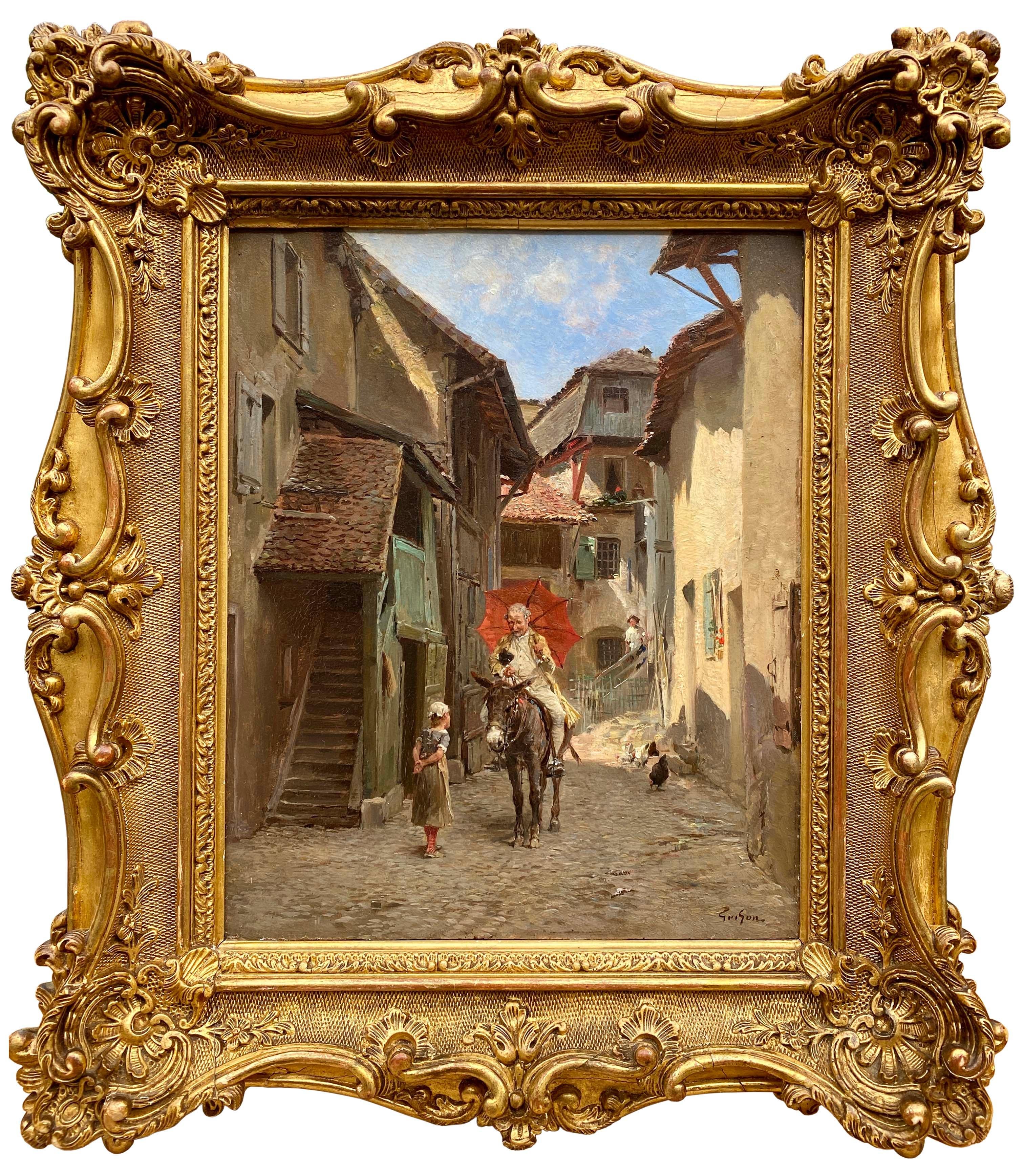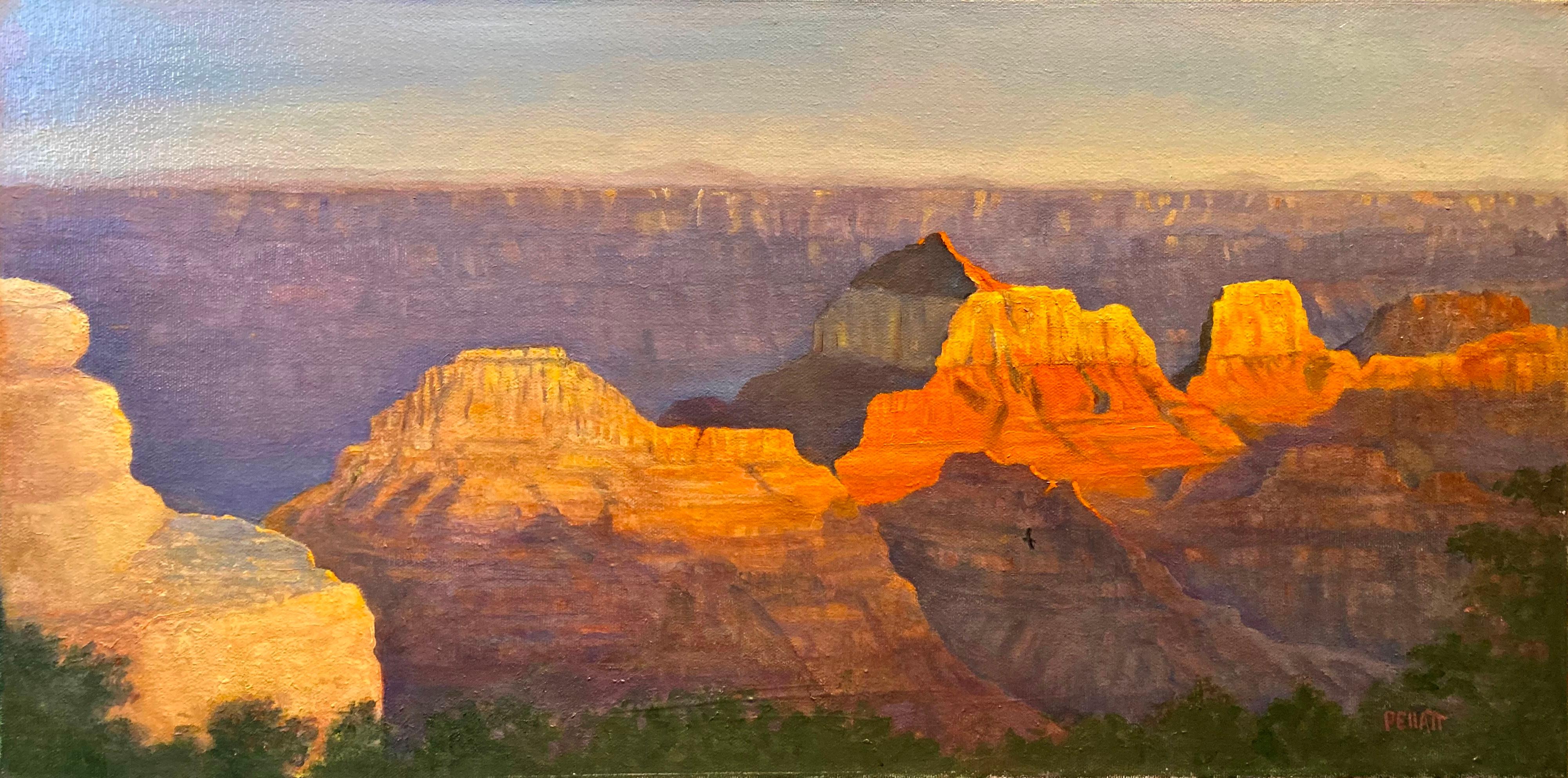Items Similar to Huge Spanish Landscape Oil Painting Mirador Sorrel Valley
Want more images or videos?
Request additional images or videos from the seller
1 of 10
Pablo CanoHuge Spanish Landscape Oil Painting Mirador Sorrel Valleyc. 2001
c. 2001
About the Item
Artist/ School: Spanish School, signed verso and dated 2001
Title: Mirador Sorrel Valley
Medium: signed oil painting on canvas, unframed.
Size:
canvas: 23.75 x 28.75 inches
Provenance: private collection, France
Condition: The painting is in overall very good and sound condition.
- Creator:Pablo Cano (1961, Cuban)
- Creation Year:c. 2001
- Dimensions:Height: 23.75 in (60.33 cm)Width: 28.75 in (73.03 cm)Depth: 1 in (2.54 cm)
- Medium:
- Movement & Style:
- Period:
- Condition:
- Gallery Location:Cirencester, GB
- Reference Number:1stDibs: LU509310417312

About the Seller
5.0
Platinum Seller
These expertly vetted sellers are 1stDibs' most experienced sellers and are rated highest by our customers.
Established in 1989
1stDibs seller since 2016
3,479 sales on 1stDibs
Typical response time: 2 hours
- ShippingRetrieving quote...Ships From: Cirencester, United Kingdom
- Return PolicyA return for this item may be initiated within 3 days of delivery.
More From This SellerView All
- Classic Racing Yachts off the Needles, Fine British Marine Signed Oil PaintingBy George DruryLocated in Cirencester, GloucestershireVelsheda & Endeavour off the Needles by George Drury (British b. 1950) signed lower corner, titled verso oil painting on board, framed framed size: 22 x 32 inches condition: excellent provenance: private collection, England A very fine marine oil painting depicting this classic yachts...Category
21st Century and Contemporary Realist Landscape Paintings
MaterialsOil
- English Oil Painting Yorkshire Terrier Dogs in LandscapeBy Heather BudgettLocated in Cirencester, GloucestershireSuperb signed English oil painting on canvas, depicting these two characterful Yorkshire Terrier dogs in a woodland landscape. The painting is by the...Category
Late 20th Century Realist Animal Paintings
MaterialsOil
- Cromdale Shipwreck, signed oil paintingBy Louis LetoucheLocated in Cirencester, GloucestershireCromdale in 1913 by Louis Letouche (French 1924-2015) oil painting on linen canvas, stretched over board framed Framed size: 14 x 19.25 inches Superb oil painting by the well list...Category
1990s Realist Portrait Paintings
MaterialsOil
- Bengal Tiger Huge Oil Painting on Canvas after George StubbsLocated in Cirencester, GloucestershireThe Tiger British School, circa 1980's after George Stubbs, c.1760 oil painting on canvas, framed framed: 26 x 50 inches Stunning oil painting on canvas, painted on a huge scale (t...Category
Late 20th Century Realist Animal Paintings
MaterialsOil
- Gota Lejon, signed oil paintingBy Louis LetoucheLocated in Cirencester, GloucestershireGöta Lejon, 1746. by Louis Letouche (French 1924-2015) oil painting on linen canvas, stretched over board framed Framed size: 15 x 21.75 inches Superb oil painting by the well lis...Category
1990s Realist Portrait Paintings
MaterialsOil
- Herzogin Cecilie, signed oil paintingBy Louis LetoucheLocated in Cirencester, GloucestershireHerzogin Cecilie, 1902 by Louis Letouche (French 1924-2015) oil painting on linen canvas, stretched over board framed Framed size: 15 x 21.75 inches Superb oil painting by the well listed French marine artist Louis Letouche (1924-2015). The painting portrays the early 20th Century ship titled: Herzogin Cecilie, 1902. Herzogin Cecilie was built in 1902 by Rickmers Schiffbau AG in Bremerhaven. She was yard number 122 and was launched on 22 April 1902. Completion was on 7 June that year. She was 334 feet 8 inches (102.01 m) long, with a breadth of 46 feet 3 inches (14.10 m) and a draught of 24 feet 2 inches (7.37 m). Herzogin Cecilie was built for Norddeutscher Lloyd Bremen. Unlike other contemporary German merchant sailing ships, the black Flying-P-Liners or the green ships of Rickmers, she was painted in white. She was one of the fastest windjammers ever built: she logged 21 knots at Skagen. The tall ships of the time remained competitive against the steamers only on the longer trade routes: the Chilean nitrate trade, carrying salpeter from Chile to Europe, and the Australian wheat trade, carrying grain from Australia to Europe. Both routes required rounding Cape Horn routinely, and were not well suited for steamers, as coal was in short supply there. Herzogin Cecilie was one of the fastest merchant sailing ships of her time, on a par with the Flying-P-Liners. The trip around Cape Horn from Portland (Oregon) to The Lizard (England) was done in 1903 in only 106 days. At the outbreak of World War I, she was interned by Chile, returning to Germany in 1920, only to be given to France as reparation, and subsequently sold to Gustaf Erikson (24 October 1872 – 15 August 1947) of Finland for £4250. She was homeported at Mariehamn.[2] As the freight rates for salpeter had dropped after the war, Gustaf Erikson sent her to bring grain from Australia. In so-called grain races, several tall ships tried to arrive first in Europe, to sell their cargo for a higher price, as told, for example, in The Great Tea Race of 1866 or The Last Grain Race. Typically, ships were loaded in the Spencer Gulf area, Port Victoria, South Australia or Wallaroo, South Australia, and travelled to Europe, with ports on the British Isles like Queenstown, Ireland or Falmouth, Cornwall being considered as the finish. After "winning" four times prior to 1921, she again won the grain race four times in eleven trips from 1926 to 1936. In 1927, when Herzogin Cecilie covered Port Lincoln (South Australia) –Falmouth, London and won a race against the Swedish ship Beatrice. Alan Villiers was on board, which would result in his book Falmouth for Orders, and later a trip aboard the barque Parma. Wreck of the Herzogin Cecilie in south Devon. With Sven Erikson as her Captain and Elis Karlsson her First Mate, the ship left Port Lincoln in South Australia on 21 January 1935, with a cargo of wheat, and after taking a more southerly route than usual, reached Falmouth for Orders on 18 May making her passage of 86 days the second fastest ever. Herzogin Cecilie was making for Ipswich in dense fog, when, on 25 April 1936, she grounded on Ham Stone Rock and drifted onto the cliffs of Bolt Head on the south Devon coast. After parts of the cargo were unloaded, she was floating again, only to be towed in June 1936 to Starhole (Starehole) Bay at the mouth of the nearby Kingsbridge Estuary near Salcombe, and beached there.On 18 January 1939, the ship capsized and sank. The remains of the ship sit at a depth of 7 metres at 50°12.82′N 3°47.02′W. The timber and brass portholes from the chart room...Category
1990s Realist Portrait Paintings
MaterialsOil
You May Also Like
- Francois Grison, Bordeaux 1845 – 1914 Genève, French Painter, Le RenseignementLocated in Bruges, BEFrancois Grison Bordeaux 1845 – 1914 Genève French Painter Le Renseignement Signature: Signed bottom right and dated on the back 1895 Medium: Oil on panel Dimensions: Image size 24 ...Category
19th Century Realist Landscape Paintings
MaterialsOil, Wood Panel
- "Colorado Falls", A.D. Greer, Original Oil on Canvas, 45x62, Mountain LandscapeBy A.D. GreerLocated in Dallas, TX"Colorado Falls" by A. D. Greer measures 45x62 in. and is one of the largest and premiere paintings Greer painted in his life. You can feel the rushing water crashing into rocks surrounded by large pine and oak trees as they stand before a snowy mountain peak. This painting was purchased by Southwest...Category
1980s Realist Landscape Paintings
MaterialsCanvas, Oil
- "Valencian Flower Pickers ", Early 20th Century Oil on Canvas by José MongrellLocated in Madrid, ESJOSÉ MONGRELL Spanish, 1870 - 1937 VALENCIAN FLOWER PICKERS signed “J. Mongrell” lower left oil on canvas 29-1/4 x 45 inches (74 x 114 cm.) framed: 42-3/...Category
1910s Realist Figurative Paintings
MaterialsCanvas, Oil
- Drama of the Sunset at the Brahma Temple in the Grand Canyon is Awe InspiringLocated in Charleston, USNancy Pellatt's "Last Glorious Light" is a western landscape that captures an awe inspired depiction of a Grand Canyon sunset at Brahma Temple, as seen from the North Rim of the Canyon. A California...Category
2010s Realist Landscape Paintings
MaterialsOil
- Soleil Levant, Vallée De La Dordogne By William Didier-PougetBy William Didier-PougetLocated in New Orleans, LAWilliam Didier-Pouget 1864-1959 French Soleil levant, vallée de la Dordogne (Sunrise, Dordogne Valley) Signed "Didier-Pouget" (lower right) Oil on canvas The majesty of the Frenc...Category
20th Century Realist Landscape Paintings
MaterialsCanvas, Oil
- Ciel d'été, Original Oil Painting, Landscape, Tree, Ready to hangLocated in AIX-EN-PROVENCE, FRWork : Original Oil Painting, Handmade Artwork, Unique Work. Ready to Hang with two studs. Medium : Oil on mounted linen on wood. Artist : Gabriel Riesnert Subject : Ciel d'été (Tit...Category
21st Century and Contemporary Realist Landscape Paintings
MaterialsOil, Wood Panel, Linen




